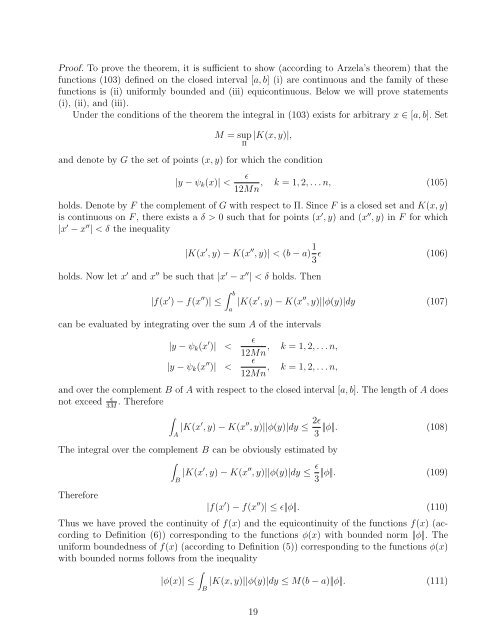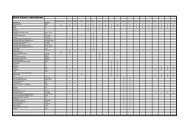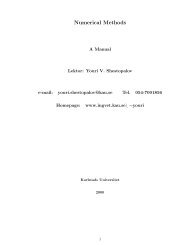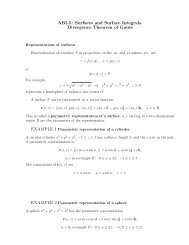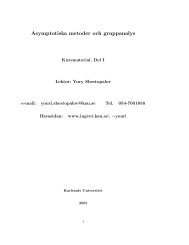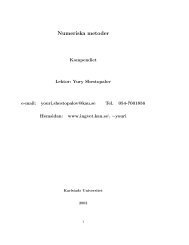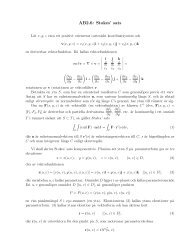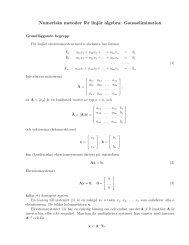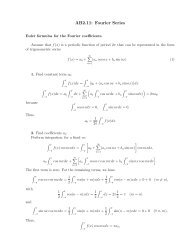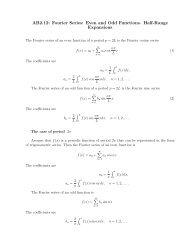Create successful ePaper yourself
Turn your PDF publications into a flip-book with our unique Google optimized e-Paper software.
Proof. To prove the theorem, it is sufficient to show (according to Arzela’s theorem) that thefunctions (103) defined on the closed interval [a, b] (i) are continuous and the family of thesefunctions is (ii) uniformly bounded and (iii) equicontinuous. Below we will prove statements(i), (ii), and (iii).Under the conditions of the theorem the integral in (103) exists for arbitrary x ∈ [a, b]. SetM = sup |K(x, y)|,Πand denote by G the set of points (x, y) for which the condition|y − ψ k (x)| < ɛ , k = 1, 2, . . . n, (105)12Mnholds. Denote by F the complement of G with respect to Π. Since F is a closed set and K(x, y)is continuous on F , there exists a δ > 0 such that for points (x ′ , y) and (x ′′ , y) in F for which|x ′ − x ′′ | < δ the inequality|K(x ′ , y) − K(x ′′ , y)| < (b − a) 1 3 ɛ (106)holds. Now let x ′ and x ′′ be such that |x ′ − x ′′ | < δ holds. Then|f(x ′ ) − f(x ′′ )| ≤can be evaluated by integrating over the sum A of the intervals∫ b|y − ψ k (x ′ )|


